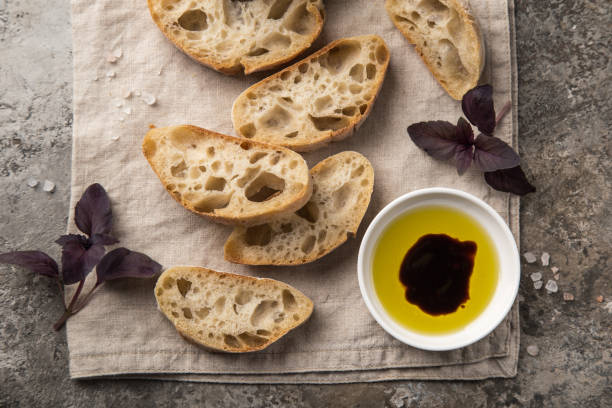
An Easy Guide to Making Bread with Oil and Vinegar
Delicious yeast breads don't have to be intimidating - with a few simple ingredients and a little bit of patience, you can easily make delicious, crusty bread flavored with oil and vinegar. This guide will provide step-by-step instructions on how to bake the perfect loaf!
How to Make the Dough.
Making the dough is simple - mix 2 teaspoons of sugar with 1/4 teaspoon of active dry yeast in three-fourths cup warm water and set aside. In a large bowl, combine two cups unbleached bread flour with ½ teaspoon of sea salt. Make a well in the middle of the mixture, then add ¼ cup olive oil and 1 tablespoon balsamic vinegar. Pour the yeast mixture into the center of the bowl and stir everything together until it forms a dough. Knead the dough until it becomes elastic, adding more flour as needed to make sure it doesn't stick to your hands or bowl. Cover the dough and let it rest for an hour before shaping into loaves.
Kneading, Folding and Resting the Dough.
Kneading the dough is a simple process - use your hands to push and fold it until it forms a smooth, elastic texture. To check if it's finished, try tearing off a small piece of the dough - if it stretches without breaking then it's ready! Once the dough is kneaded, place it back in the bowl and let it rest for at least an hour. This will give the yeast time to activate so your bread will have plenty of airy pockets inside once cooked.
Scoring and Baking the Loaves.
Now that your dough is ready, it's time to shape and score the loaves. Take a golf ball-sized piece of dough and roll it into a tight log. Then place it in a greased pan and press lightly until it reaches the edges of the pan. Use a sharp knife to score slits across the surface of the dough and brush with oil or vinegar before baking. Place in an oven preheated to 390°F (200°C) for 40 minutes or until golden brown. Allow the loaves to cool for at least 20 minutes before serving. Enjoy!
Cooling the Bread for Optimal Texture and Flavor.
It’s important to allow the bread to cool completely before enjoying. This gives the bread time to harden and develop a flavorful, crusty exterior. In order to preserve the flavor and texture of homemade oil or vinegar-based breads, it’s important to avoid slicing into the loaf until it has cooled for at least 20 minutes.
Tips for the Best Oven Temperature and Bake Time for Your Bread.
Breads with oil and vinegar typically bake best at 350-375°F for 25-35 minutes. For crispier finishes, give your loaves a few extra minutes in the oven. To prevent overbrowned or burnt crusts, cover liberally with foil just before the end of baking time. Check the bread with an instant read thermometer to be sure it reaches between 190-200°F in the center before removing from the oven.
